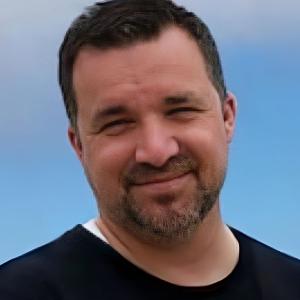What’s 1,800 years old, made of stone, and could help uncover a riddle of the universe? It’s called the Megiddo Mosaic, and thanks to the Museum of the Bible and Angel Studios, the world is about to learn its essential place in Christian history as one of the first artifacts to prove Jesus was the Christ.
The documentary, narrated by survivalist and reality show host Bear Grylls, will explain the importance and symbolism of what is widely considered “the greatest [biblical or archaeological] discovery since the Dead Sea Scrolls.” The 581-foot artifact was found underneath an Israeli “Megiddo Prison” floor in 2005.
Upon discovery, the excavation team knew this was the beginning of a supernatural discovery. It was carefully disassembled into a dozen pieces and sent to the Museum of the Bible in Washington, D.C., for research, study and understanding. Of course, its discovery made international news and history. What will Angel Studios help us uncover? What else do we need to learn about the Megiddo Mosaic?
It is also one of the first recorded documentations of Jesus’ divinity. We can start there.
Before we delve into those questions, do you want to stay in touch with faith-based issues that are “close to home?” Subscribe to our free newsletter and never miss what’s being said about the Church or what Christians can say back.
Megiddo Mosaic: “God Jesus Christ”
That is a compelling trailer. At the time of the Megiddo Mosaic discovery, Gil Lin, the head of the Megiddo Regional Council, was quoted in a Jerusalem News Service article:
“The Megiddo mosaic represents the most significant archaeological find since the Dead Sea Scrolls,” Lin said. “This mosaic, nearly 1,800 years old, is the earliest known house of prayer and the first physical proclamation of Jesus Christ as God. For billions worldwide, it’s not merely an artifact but a tangible link to shared history, tradition and faith.”
That is, as the kids say, “a mic drop.” Saints should praise God—Catholic or Protestant. This is irrefutable evidence of Jesus Christ’s ministry. It’s all because of three simple words in the inscription placed in the message: “The God-loving Akeptous has offered this altar to the God Jesus Christ as a memorial.”
Aside from the illustrious history of this find, the documentary will detail what the gender-nullifying, barrier-breaking, Jesus-extolling inscription means. Initially, it acknowledged seven people for their crucial roles in the local church near Megiddo. Oh, five of them were women.
One panel on the eastern side of the Megiddo mosaic reads, “Remember Primilla and Cyriaca and Dorothea, and moreover also Chreste.”
Verily, I say unto you, wheresoever this gospel shall be preached in the whole world, there shall also this, that this woman hath done, be told as a memorial to her. (Matthew 26:13 KJV)
That phrase “as a memorial,” or loosely translated in other Bible versions, “in remembrance,” is the Greek word mnémosunon. This is the root of the grammar memorization tool, “mnemonics.” It is also more than to think about someone whenever you have the inclination. This refers to an offering, something tangible that must be done when that thought strikes. The woman who anointed Jesus’ feet was that important to His message. Likewise, these four women’s sacrificial actions were that important to the ancient church.
They weren’t just working the front door, either. That’s for all those fundamentalists who read 1 Corinthians 14:34-35 with a certain slant. (You know who you are.)

Toward the center panel, another inscription recognizes a woman named Akeptous. In the inscription, sharing her name is an early affirmation of Jesus’s divinity. Historically, the Church decreed this a century later. “The god-loving Akeptous has offered the table to God Jesus Christ as a memorial.”
To-God-Jesus-Christ. They were written distinctively yet as one thought. In Latin, this is called “nomina sacra,” which means sacred names. As if that wasn’t enough, the Megiddo Mosaic is one of the first known artifacts depicting the Ichthys, which literally means “fish” in Greek. However, it’s the Greek letters inside of it that all Christians should hearken—ΙΧΘΥΣ.
That means “Jesus Christ, God’s Son, Savior.” The faith of early Christians overcame the fear they felt in Rome, where Christianity was outlawed for a time. This gripping documentary will tell the story.
The Megiddo Mosaic is currently on display at the Museum of the Bible in Washington, D.C., until July 6, 2025. The documentary is available now via the Angel Studios app or Angel.com/MOTB.














